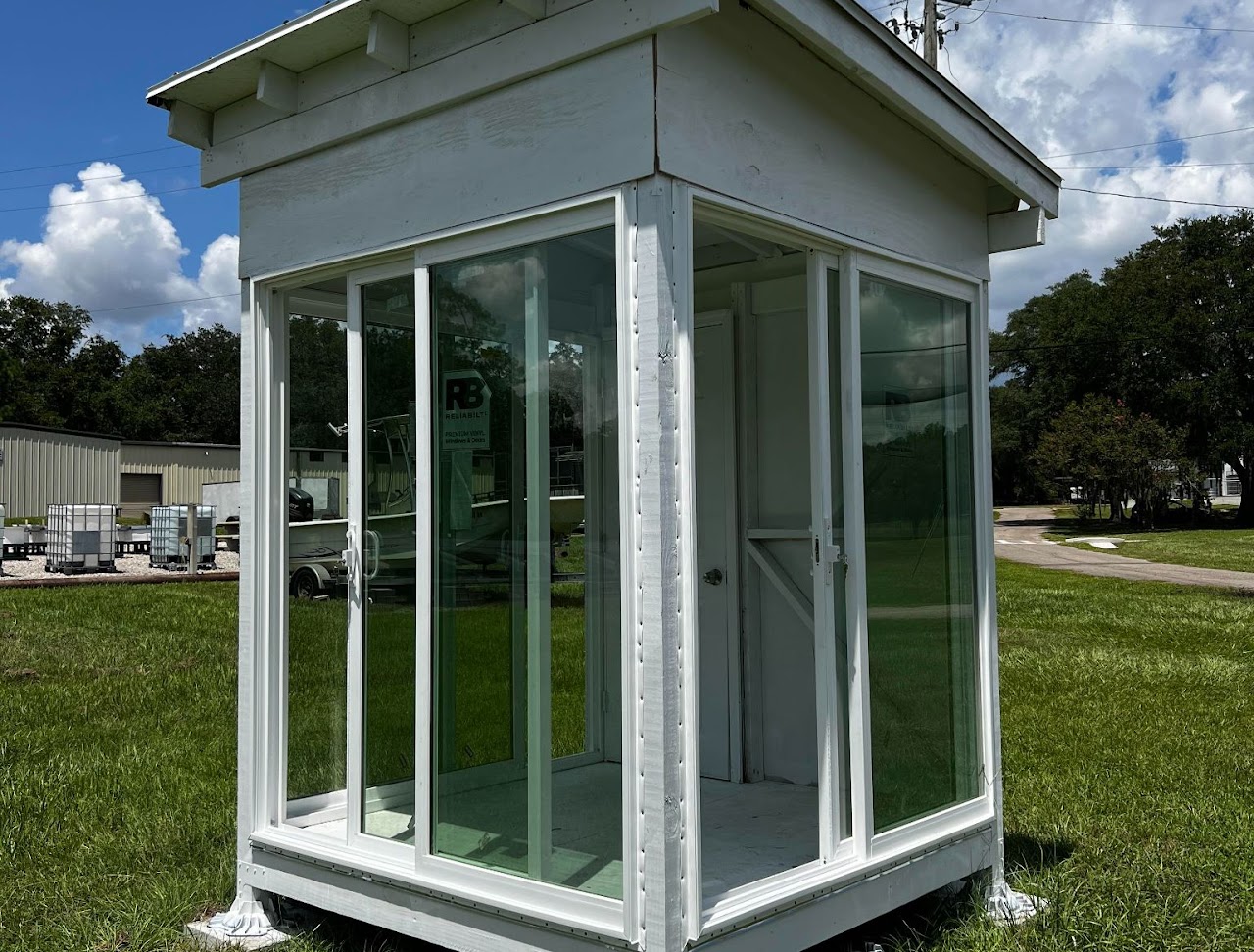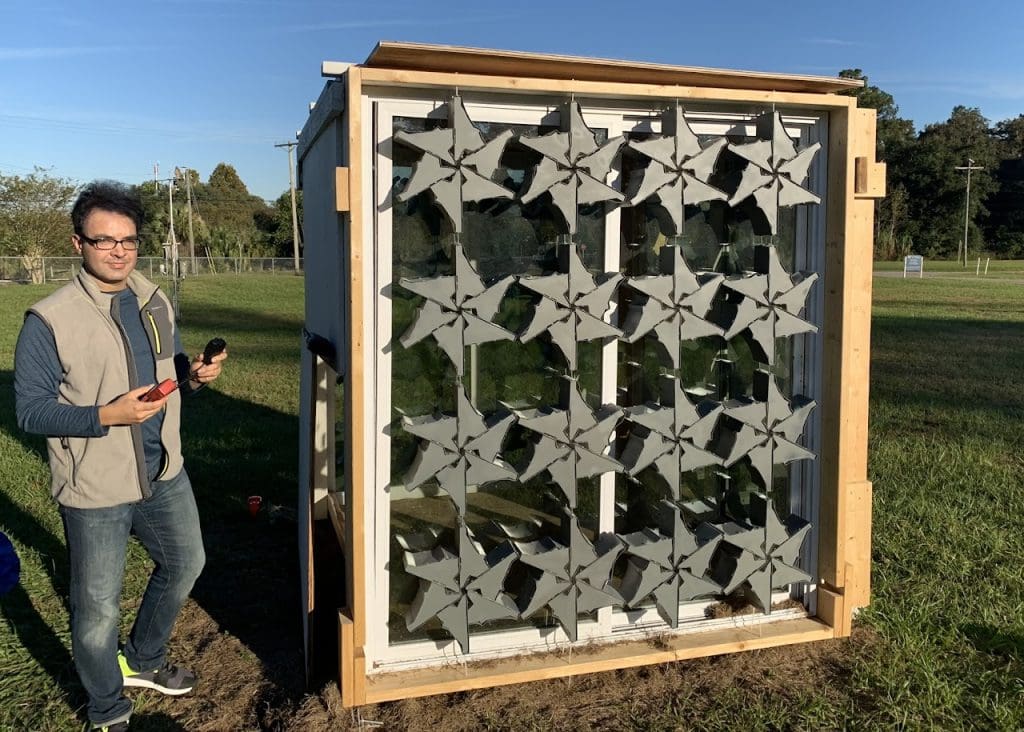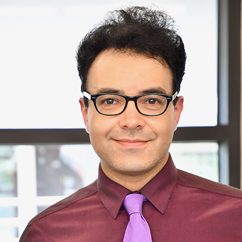OUR PROGRAM
Adaptive Built Environment Design
The Adaptive Built Environment Lab (ABEL) primarily focuses on developing adaptive building design solutions to mitigate the effects of climate change and enhance the health and well-being of occupants.
Short- & Long-term Resilient Buildings
ABEL designs, fabricates and tests sustainable and resilient design and construction solutions for real-world implementation.
Multi-Disciplinary Collaborations
ABEL engages in multi-disciplinary and multi-institutional collaborations to address the resilience of net-zero emission buildings in the face of natural disasters and global temperature increases.
Dedicated to developing a sustainable and resilient future through embracing environmentally adaptive design and construction
PROJECTS
Environmentally-conscious & Dynamically-adaptive Building Envelope™ (EDBE™)
The EDBE™ project abolishes the requirement of multiple façade technologies by providing an integrative solution to simultaneously achieve improved IEQ, resilience, energy savings. This project includes shading, variable insulation, energy generation and wind resilience (storm shutters) functionalities.


Cool Box™
The “Cool Box™” project is combined simulation and experimental research project focusing on developing a new generation of advanced shading systems. This project focuses on developing a shading system that can simultaneously maximize spatial daylight autonomy, minimize annual sun exposure, and minimize daylight glare probability.
Smart Lighting & Perceived Safety
This project utilizes virtual reality (VR) to simulate various lighting conditions and examine pedestrians’ interactions in a controlled environment. This project aims to examine the comparative impact of varying lighting features (brightness, color temperature, and dynamic changes in these attributes) on pedestrians’ perceived safety at night.

OUR TEAM

Ryan Sharston
ABEL Lab Lead
Ryan is an architect and a civil and environmental engineer focusing on high performance buildings and the health and well-being of occupants.
CURRENT MEMBERS
Jingyuan Shen
Ph.D. Student
ALUMNI
Manan Singh, Ph. D
Alumni
Stephen Boyle
Alumni
PUBLICATIONS
2023
Singh, M., & Sharston, R. 2023. Normalized Urban Heat Island (UHI) Indicators: Classifying the Temporal Variation of UHI for Building Energy Simulation (BES) Applications. Building Simulation, Volume 16, https://link.springer.com/article/10.1007/s12273-023-1048-7.
Carney, J., Srinivasan, R., Bender, S., O’Dell, B., Sharston, R., Chini, A., & Foroutan, F. 2023. Advanced Modular Housing Design: Developing the CORE+, Cityspace, Volume 25 Number 1, https://www.huduser.gov/portal/periodicals/cityscape/vol25num1/article2.html
Kang, H., Sharston, R., Shen, J., & Hayes, R. 2023. The impact of adaptive street lighting on perceived safety: Comparative analysis using Virtual Reality. LEUKOS (Under Review).
Shen, J., Sharston, R, & Kang, H. 2023. Investigating the effects of dynamic street lighting on pedestrians’ perceived safety through online video survey (Under Preparation).
Singh, M., & Sharston, R. 2023. Evaluating the role of geographical and climatic variables in the inter-city variations of atmospheric UHI intensity: A case study of 15 cities in the United States (Under Preparation).
Singh, M., & Sharston, R. 2023. Critical evaluation of the spatio-temporal behavior of UHI, through correlation analyses based on a multi-city dataset (Under Preparation).
Singh, M., & Sharston, R. 2023. Location- Independent Empirical Models to Quantify the Spatio-Temporal Variation of UHI Intensity (Under Preparation).
Sharston, R., Shen, J., & Singh, M. “Utilization of auxetic structures in advanced shading systems to improve lighting and thermal performance in Florida, USA.” Building Simulation 2023, International Building Performance Simulation Association, Shanghai, China (Accepted for Publication).
2022
Satola, D., Wiberg, A. H., Singh, M., Babu, S., James, B., Dixit, M., Sharston, R., Grynberg, Y., Gustavsen, A. 2022. Comparative review of international approaches to net-zero buildings: Knowledge-sharing initiative to develop design strategies for greenhouse gas emissions reduction, Energy for Sustainable Development, Volume 71, Pages 291-306, ISSN 0973-0826, https://www.sciencedirect.com/science/article/pii/S0973082622001880
Singh, M., & Sharston, R. 2022. Quantifying the dualistic nature of urban heat Island effect (UHI) on building energy consumption, Energy and Buildings, Volume 255, 111649, ISSN 0378-7788, https://www.sciencedirect.com/science/article/pii/S0378778821009336
Singh M, Sharston R. 2022. A literature review of building energy simulation and computational fluid dynamics co-simulation strategies and its implications on the accuracy of energy predictions. Building Services Engineering Research and Technology. 43(1):113-138. doi:10.1177/01436244211020465. https://journals.sagepub.com/doi/abs/10.1177/01436244211020465?journalCode=bsea
Singh, M., & Sharston, R. 2022. Resilience of zero energy buildings: A parametric analysis, Building Research and Information (Under Review).
Shen, J., Singh, M., & Sharston, R. 2022. Street lighting and perceived safety: A Critical Review of Experimental Methods (Under Preparation).
2019
Sharston, R., Murray, S. 2019. The combined effects of thermal mass and insulation on energy performance in concrete office buildings, Advances in Building Energy Research, 14:3, 322-337. https://www.tandfonline.com/doi/abs/10.1080/17512549.2018.1547220?journalCode=taer20
Yi K., Y., Sharston, R., and Barakat, D. 2019. Auxetic Structures and advanced daylight control systems, Journal of Facade Design and Engineering, Vol 7 No 1. https://dl.acm.org/doi/10.1145/3363459.3363538
Conference Proceedings (selected)
2022
Singh, M., & Sharston, R. “Evaluating the spatial variation of heat wave intensity to enhance urban resilience”. CIB World building congress 2022, Melbourne, Australia. https://iopscience.iop.org/article/10.1088/1755-1315/1101/2/022016/meta
Singh, M., & Sharston, R. “Evaluation of net zero energy buildings for climate resilience in southeast U.S.” The Architectural Research Centers Consortium & the European Association for Architectural Educators’ 2022 International Conference, March 2-5, 2022, Miami, FL. chrome-extension://efaidnbmnnnibpcajpcglclefindmkaj/http://www.arcc-arch.org/wp-content/uploads/2022/09/ARCC-EAAE-2022_Proceedings_Digital-Version.pdf
Sharston, R., & Singh, M. The effects of diffuser location on thermal comfort in hospital recovery rooms. ASHRAE IAQ 2020: Indoor Environmental Quality Performance Approaches, May 4-6, 2022, Athens, Greece. https://www.proquest.com/openview/71d8029de3c3adadfe30fda273252c0d/1.pdf?cbl=5014767&pq-origsite=gscholar
2020
Singh, M., & Sharston, R. Direct air capture technology: An investigation of net carbon impacts. Proceedings of AIA/ ACSA Intersections conference: Carbon, September 30 – Oct 2, 2020, Philadelphia, PA. https://www.acsa-arch.org/chapter/direct-air-capture-technology-an-investigation-of-net-carbon-impacts/
2019
Sharston, R. “Advanced Daylight Admission Systems Using Auxetic Structures in Florida, USA.” The 6th ACM International Conference on Systems for Energy-Efficient Buildings, Cities, and Transportation (BuildSys 2019), November 13-14, 2019, New York, NY, USA. https://dl.acm.org/doi/abs/10.1145/3363459.3363538
Sharston, Ryan, Yi Kyu, Yun, and Barakat, Dua, 2019, Auxetic Structures and Advanced Daylight Control Systems, PowerSkin Conference 2019, Munich, Germany, January 17-2019